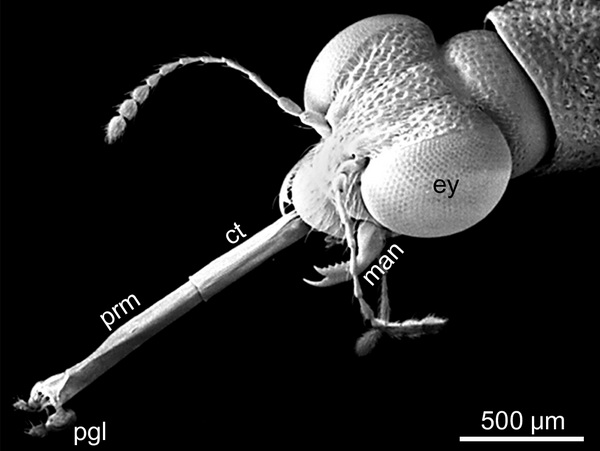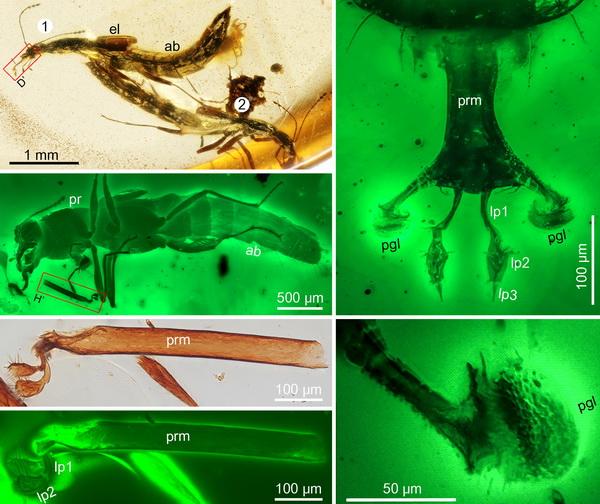The hyperdiverse rove beetle genus Stenus (Steninae) has one of the most specialized prey-capture structures known from extant arthropods. They use a ‘tongue’-like apparatus formed by a protrusible labium with terminal sticky cushions and a haemolymph pressure to catch fast-fleeing prey. Fossils with an exposed apparatus are exceedingly rare. Mesozoic stenines are therefore significant for elucidating the early evolution of the group.
Recently, an international team led by Dr. CAI Chenyang, from the Nanjing Institute of Geology and Palaeontology of the Chinese Academy of Sciences, reported two species of the extinct stenine genus Festenus from mid-Cretaceous Burmese amber, some 99 million years ago, which provides important information about the origin and early evolution of both the novel predatory structure and of the beetle subfamily.
Steninae include three extant genera: the widespread Stenus, the Holarctic Dianous, and a new genus from Australia. Living in various microhabitats, extant Stenus species prey on fast-fleeing springtails and other small animals. The species of Dianous lack such a protrusible labium.
Dr. Cai and his colleagues examined over 120 individuals of Steninae, and found an exposed prey-capture apparatus in only two specimens. The ‘tongue’-like apparatus displays a generalized form, just as that in extant species such as Stenus comma. Therefore, like modern Stenus species, these fossil stenine rove beetles were likely able to catch small-sized animals such as springtails using their sticky apparatus.
The discovery of direct evidence of a protrusible prey-capture apparatus in one of the earliest known stenine beetles from the Cretaceous illuminates their early evolution and confirms an ancient origin for their derived predatory behavior.
Molecular phylogenetic studies of selected species of Stenus and Dianous indicated an origin of Dianous within Stenus, suggesting a secondary loss of the harpoon apparatus. The presence of a protrusible prey-capture apparatus has been considered the most prominent apomorphic character for Stenus, but this assumption is rejected the new disveorey of these Mesozoic Steninae with specialized prey-capture apparatus
Reference: Chenyang Cai*, D.J. Clarke, Ziwei Yin, Yanzhe Fu, Diying Huang, 2019. A specialized prey-capture apparatus in mid-Cretaceous rove beetles.Current Biology. DOI: 10.1016/j.cub.2019.01.002.

Specialized prey-capture apparatus in an extant Stenus species.

Specialized prey-capture apparatus in mid-Cretaceous stenine rove beetles.
